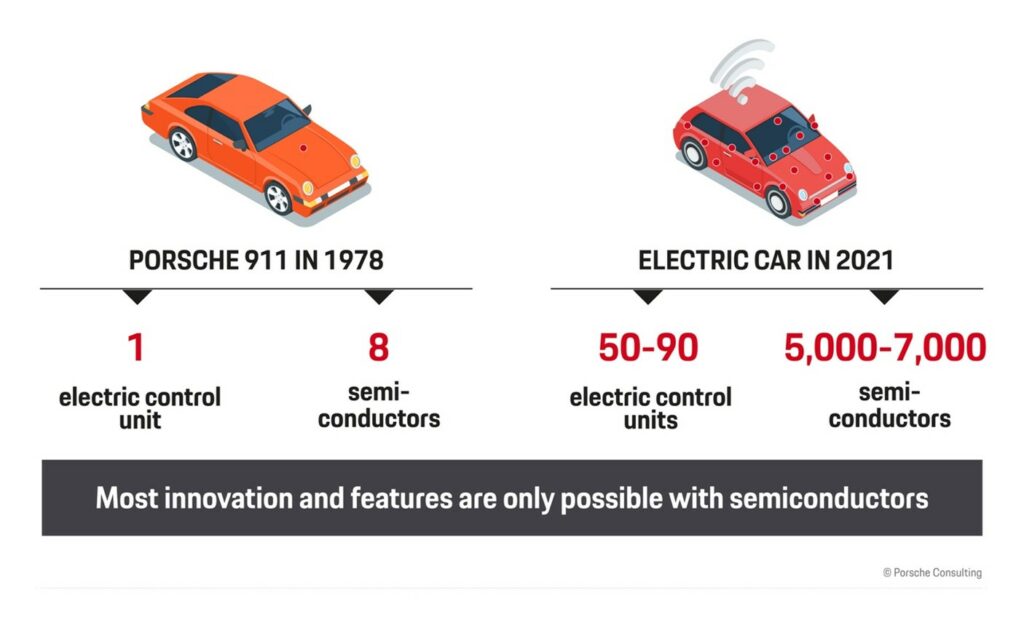
In the ever-evolving world of smart cars, cybersecurity has emerged as a major priority in the automotive industry. Automotive manufacturers are facing a market that demands smart cars meet more stringent automotive security compliance requirements, and providing evidence of security rigor to regulators, stakeholders, and consumers is more critical than ever.
As the brains of modern vehicles, the chips that power these systems are responsible for a wide range of functions, from sensor data processing and vehicle control to communication and data storage. With today’s electric cars containing over 5,000 semiconductors, ensuring the security of these chips is essential to preventing potential attacks or tampering that could compromise the functional safety and cybersecurity of the vehicle.

need careful scrutiny to avoid cybersecurity vulnerabilities.
Meeting Automotive Security Compliance Standards
Automotive suppliers must stay ahead of the curve when it comes to automotive cybersecurity requirements. Ensuring total supply chain protection requires keeping up with ever-evolving regulations and standards in this rapidly advancing industry. For example, UN Regulation #155, which was released in 2021, sets uniform approval provisions regarding vehicle cybersecurity, and ISO 21434 “Road Vehicles – Cybersecurity Engineering” provides critical guidelines on how best to reduce design and development risks when it comes to automotive electronics.
With these security measures like these in place, automotive manufacturers can provide customers with high levels of assurance and establish confidence in automotive cybersecurity throughout the marketplace.
Common Compliance Challenges
Most companies developing semiconductors have hardware security practices that will provide some foundation for standards such as ISO 21434. However, there are still challenges, including:
- Insufficient automotive security compliance and verification processes
- Lack of resources to drive the compliance requirements and necessary documentation
- Poor specification and scope – including inaccurate or unverifiable security requirements
- Complex requirements and approvals from multiple stakeholders
Additionally, manually gathering, compiling, and presenting the supporting certification documentation necessary to demonstrate security rigor to stakeholders and consumers, can take significant time and effort — while pressures to meet schedules never change.
The Impact of Automotive Cybersecurity Standards
In order for OEMs and other companies in the supply chain to prove compliance with industry standards like ISO 21434, these organizations need to ensure a transparent, well-documented “Security-by-Design” process. This process includes measures such as:
- Cybersecurity testing with adequate coverage
- Comprehensive system and hardware verification
- Well-defined cybersecurity processes and policies for the development process
- Adherence to general cybersecurity best-practices
By complying with standards like ISO 21434, organizations in the automotive supply chain put cybersecurity at the start of the development lifecycle. This enables developers to identify, prioritize, and remediate cybersecurity risks before they become an issue.
Radix Methodology Aligned with Emerging Standards
Cycuity’s Radix technology enables OEMs and other companies in the automotive supply chain to prove compliance with ISO/SAE 21434 and similar standards. Radix introduces automation, scalability, and traceability to hardware security verification and provides a blueprint for stakeholders and security teams who want to mature their compliance processes to implement cybersecurity assurance in designs more efficiently.
To learn more about how your team can leverage Radix to help meet various security standards and regulations, including ISO 21434, download the fact sheet, Simplifying Automotive Cybersecurity Compliance, today.
